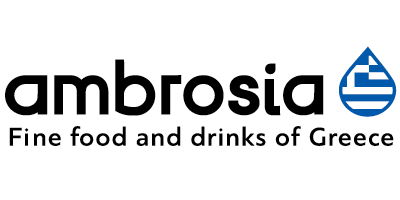Following a long tradition, Greek cookies are exceptionally delicious and made from fresh, top-tier ingredients, native to the Greek land. No wonder, they are finally getting well-deserved attention from F&B buyers –and subsequently consumers– all across the world.
By the end of the 14th century, one could buy little filled wafers on the streets of Paris, while renaissance cookbooks were rich in cookie recipes. When people started to explore the globe, biscuits and cookies became the ideal traveling food, because they stayed fresh for long periods of time. For centuries, a ship’s biscuit, an iron-like cracker, was aboard any ship that left port because it could last for months (even years under the right conditions). Eventually, the English, Scotch, and Dutch immigrants originally brought the first cookies to the United States, which strongly resembled the English teacakes and the Scotch shortbread.
As technology improved during the Industrial Revolution in the 19th century, so did the ability of bakers to make a wide range of sweet and savory biscuits for commercial consumption. Despite more varieties and hundreds upon hundreds of cookie recipes becoming available, the essential ingredients of biscuits didn’t change: “soft” wheat flour, which contains less protein than the flour used to bake bread, sugar, and fats, such as butter and oil. Nowadays, there are hundreds upon hundreds of cookie recipes.
A Greek cookie tradition
In Greece, cookies are called “koulourakia” and are a staple in most households. They are an everyday treat; something to enjoy together with a cup of Greek coffee, a confection reserved for holidays and special occasions, such as marriages, christenings and other significant social events. The authentic Greek cookies are made from delicious yet simple ingredients, such as grape must, extra virgin olive oil, orange juice and zest, ouzo, Mastic from Chios, honey, etc. Some of them are also unique to specific regions of the country or are associated with a particular circumstance (e.g. “moustokouloura” made from grape must, were usually prepared during the grape harvest, while sesame paste cookies are considered popular lenten biscuits). There are several different cookie shapes in Greece (in fact, shapes and ingredients vary in keeping with the imagination of each housewife or baker), but the plaited ones are by far the most popular. With regards to flavors, cinnamon, orange and vanilla are the ones mostly favored by both the Greek and the international markets, as Mr Stathis Giachanatzis, President & CEO of Fedon SA, explains.
“Nowadays, Greek cookie companies are making traditional ‘koulourakia’ available to an international clientele that has until recently been unaware of their variety and exceptional flavors. And they are turning them into the newest obsession of foodies all across the globe. In fact, the Greek word ‘koulourakia’ literally means cookies.”
Innovation, key to the future
Always looking to identify new consumer trends and also keeping abreast with international market developments, Greek cookie producers are slowly but surely gaining a loyal international customer base. According to Ms Irene Velemi, Vice-President & CEO of Velemis SA, “countries with a large Greek population or countries where the Mediterranean Diet is high on preference list, such as the US, Canada and Germany, favor Greek cookies, while in other countries ‘koulourakia’ must become more tailored to local custom and market trends in order to keep up with the competition.”
As for the future of Greek cookies, Ms Velemi insists that innovation in equipment and ingredients have created new and exciting types of products “without preservatives or raising agents, for example, that are in line with the ever increasing consumer needs, such as low fat, sugar free, allergen free, gluten free, etc.”
“Gluten free is a major trend that has affected cookie sales,” concurs Mr Giachanatzis. “Cookies enriched with super foods, as well as functional cookies are also extremely popular mainly in the affluent, developed countries that favor the latest food and lifestyle fads, while at the same time looking for value for money products.”
The most famous Greek cookies
- Kourabiedes, also known as “Greek Wedding Cookies” (in some regions, they are served at special occasions such as weddings or christenings), are Greek biscuits or cookies that resemble light and airy shortbread, but are made with the addition of almonds. Other ingredients include large amounts of butter, as well as flour, sugar, salt, and vanilla extract, among others. Kourabiedes are shaped either into circles, crescents or balls, then baked till slightly golden. Immediately after removing the cookies from the oven, they are rolled in confectioner’s sugar (icing sugar) and left to cool. In Greece, Kourabiedes are commonly consumed during the Christmas season, though nowadays they are seen all year-round.
- Melomakarona are egg-shaped Greek cookies made mainly from flour, semolina, cinnamon, olive oil, and honey. Along with kourabiedes, they are a traditional dessert prepared primarily during the Christmas holiday season. They are often filled with ground walnuts. Immediately after baking, they are immersed for a few seconds in syrup made of honey. Dark chocolate-covered melomakarona are a recent yet delicious variation of the traditional recipe.
- Moustokouloura are cookies made from grape must and are very popular in Greece. In the old times, they were usually prepared during the grape harvest, but nowadays, one can find them all year round. Sometimes currants are added, while instead of must, one can also use grape molasses. Moustokouloura come in different shapes and can be soft or crunchy, depending on the amount of flour used.
- Easter cookies are one of the most popular cookie recipes in Greece. They are usually made on Maundy or Holy Thursday, using orange juice and orange zest and vanilla flavor. In Greece, there are several types of Easter koulourakia, but one of the most popular and delicious is the koulourakia from Ioannina in the region of Epirus.
5 reasons to love Greek cookies
Cookies are a simple sweet treat, perfect for any occasion. And the ones produced in Greece are really hard to resist.
- They integrate all the latest innovations in food preparation and baking. Keeping abreast with international market developments as well as the latest food trends, Greek cookie companies are heavily investing in R&D in order to produce even better, tastier and healthier options.
- They are made from highly nutritious ingredients of the Greek land. One of the most important nutritional characteristics of the cookies is their high dietary fibre content. They also contain macro-nutrients that provide energy for the body, such as proteins, carbohydrates and fats. Not to mention that Greek cookies, as most of Greek produce, are GMO free.
- They are part of the Mediterranean diet, which is gaining momentum worldwide. Times call for a balanced diet, and why not kill two birds with one stone by combining high value Greek ingredients with a tasty snack?
- They have excellent organoleptic characteristics. Qualified nutritionists and scientists aim to develop top-quality, preservative-free products, using traditional Greek recipes.
- Greek cookie production units constantly monitor each and every production phase. They also employ a team of experts who work tirelessly to guarantee the quality of end products, according o the Greek and European Codex Alimentarius and the European legislation.
Greek cookie companies





















